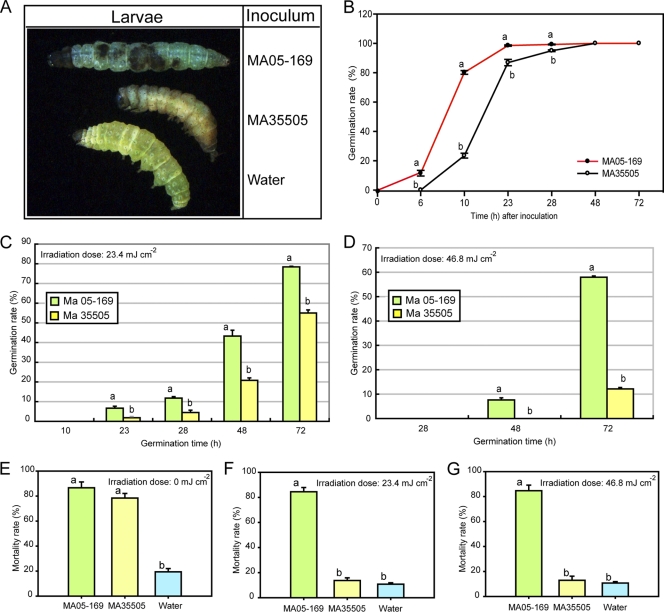Fig. 3.
Effects of UV-B irradiation on the conidial germination rate and infectivity of the M. anisopliae transformant (MA05-169) and wild type (BCRC35505; MA35505) on 3rd-instar larvae of the diamondback moth. (A) Larvae showing distinctive black patches on the cuticles of a carcass inoculated with M. anisopliae MA05-169 versus yellow or light brown caused by M. anisopliae BCRC35505 and greenish caused by water. (B) Germination rates of M. anisopliae BCRC35505 and M. anisopliae MA05-169 at different time intervals without UV-B irradiation. (C and D) Germination rates of M. anisopliae BCRC35505 and M. anisopliae MA05-169 at different time intervals following exposure to UV-B at dosages of 23.4 mJ cm−2 (C) and 46.8 mJ cm−2 (D), respectively. (E to G) Mortality rates of 3rd-instar larvae infected by M. anisopliae BCRC35505 and M. anisopliae MA05-169 without (E) or with UV-B exposure at a dosage of 23.4 mJ cm−2 (F) or 46.8 mJ cm−2 (G), using water as a negative control. The error bars indicate standard deviations. Different characters above each point or bar represent significant differences at a P value of <0.05.

